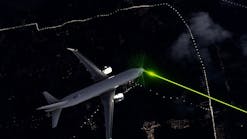Airport operators, airlines, and passengers are rapidly adopting a wide range of digital technologies to smooth many facets of the air travel experience. Digital displays are an ideal fit for airports because their bright, dynamic images grab and hold attention, even in settings with abundant ambient light. Even better, they can be configured into any shape and size and be deployed both inside and outside air terminals.
Digital signage offers many advantages over traditional static signs. They allow content to rotate, make updating content easy, and provide interactivity with touch-enabled screens.
Making the journey more efficient
A primary goal for airport operators and airlines is to move passengers from curbside through check-in and security and onto their planes as efficiently and seamlessly as possible. Digital displays have long been used to provide flight information and self check-in. They’re now helping airports and airlines simplify and speed up the passenger journey in many new ways.
Flight information displays are now larger and brighter than ever, allowing passengers to see their gate number and flight status from a great distance and in any lighting condition. The old days of crowding in front of a small flight information screen will soon be a distant memory. Large screen displays also keep passengers up-to-date on rapidly changing conditions, including flight delays and gate switches, estimated taxi or security wait times, and weather forecasts.
Large digital signs displaying terminal maps and touch-enabled wayfinding kiosks help passengers navigate the airport. These detailed maps provide a wealth of useful guidance — from the location of departure gates, restrooms, and charging stations to showing restaurant and retail options — showing passengers how to get to where they want to go.
The functionality of check-in kiosks have greatly expanded since their early days. They now allow passengers to upgrade their cabin, add amenities, pay fees and even print their own baggage tags.
Large screen displays are also used in air traffic and airport operations control room and for crew briefings, employee training, and other back-end uses. They help ensure everything moves as quickly as possible.
Enriching wait time
By providing essential information and helping streamline check-in, digital displays improve communications, helping airports and airlines run their operations more smoothly. As a result, passengers are less anxious about catching their flights. They have better opportunities to relax and spend more of their wait time at airport restaurants and retail shops.
Digital signage in retail shops present ads and product information. In bars and restaurant, digital signs and kiosks offer menus, and projectors can show sports broadcasts and other entertainment programming on a large scale. Public waiting areas can also be outfitted with digital displays, allowing operators to provide passengers entertainment, art or other cultural content, or breaking news.
Advances in the integration of smartphones with Bluetooth-enabled beacon technology means that digital signs can deliver highly relevant ads to passengers passing by, alert them to deals at shops and restaurants, and simplify airline lounge admission for members.
Improving passenger satisfaction
Airport operators want to make passenger journeys better for reasons beyond just streamlining the process. They also seek to improve the entire passenger experience. Calm, efficient environments and modern digital amenities encourage passengers to use the airport in the future, rather than choosing other transportation alternatives. From ease of check-in and simple wayfinding to entertainment — and even touch-enabled displays that allow passengers to alert janitorial staff that a restroom needs cleaning or paper goods resupplied — displays are a vital part of improving passenger satisfaction.
Many of the leading passenger frustrations are centered on the lack of timely and effective communication. How far is it to my gate? How long will it take for my suitcase to arrive at the baggage carousel? Where do I go for ground transportation? Digital displays easily solve or mitigate these passenger irritations and others that arise due to poor communication.
Airport operators can also install digital displays in public waiting to provide passengers entertainment, art and other cultural content, or breaking news.
Ensuring safety and security
Security concerns have become paramount in all transportation settings, and airport operators are constantly considering new measures to ensure passenger safety.
Because their content can be changed quickly, digital displays are an ideal solution for broadcasting emergency and safety messages. Digital signs throughout the airport can transmit evacuation orders and show exit routes in case of an emergency. They can also provide rotating messages to reinforce safety awareness, such as the “If you see something, say something” campaign.
Creating Smart Airports
Digital displays will play a larger role in air travel as airport and airlines modernize and adopt solutions to address the digital expectations of passengers. Digital signage and touch-enabled kiosks will continue to help ease and enrich the passenger journey, boost passenger satisfaction, and ensure safety at airports.
With over 15 years of experience in the AV industry, Paul currently serves as a Business Development Manager at NEC Display Solutions. In this role, he is responsible for being the company’s expert in transportation solutions and implementation. Prior to NEC, Paul worked for Milestone and the 3M Visual Systems Division.




